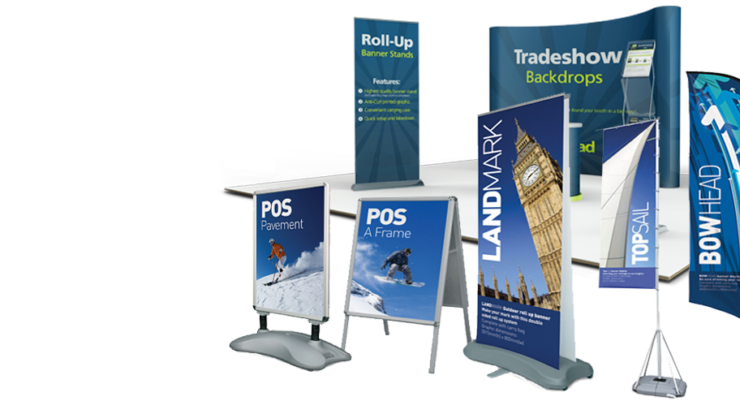
Display printing can be a great support to your marketing efforts. Here are some important considerations that can help you make the most of it.
Keep a Close Eye on the Details
From the design phases, it may seem daunting to have such a large work area to fill with your publicity and message. Where does one even begin on a project of this magnitude? The real problem here is trying to get an idea of what the finished project will look like.
Practically speaking, it is essential to think of the design in terms of scale. But it also means that the very smallest misalignments and errors that you may or may not see on the screen will become highly visible in the completed product.
To make sure things are kept accurate, it is always a good idea to work on a quarter-scale of the final planned design. This way you will keep your products smaller and more easily managed. You will only have to divide the elements you will be including in your design by 4 to get the right sizes.
The details are of the ultimate importance and this is why you will need to get the right alignment for the task at hand. Even though smart guides can help snap all elements together, these short cuts should be avoided. To get the positioning perfect, you will need to consider your coordinates.
Always check and double check your artwork in full size. This is easily done; simply export the document to a PDF file and then expand to 400%. This will give you a full display of the details and the final product.
Use the Right Image Format
Graphic designers will typically use raster images composed of bitmaps, which are the most basic and common type of file for images. BMP, JPEG, TIFF, BMP and GIF are all bitmap images. These formats work very well with a wide range of different types of media, but they are not the best option when looking for a very large-scale project.
This is because the images you use will become heavily pixelated when fully-enlarged and when you are working on a large-scale format this is even worse. It can be very difficult to find the right software that allows you to work on a small enough scale while still avoiding issues with pixelation.
Pixels store information, when used for very large projects for large format printing the files they can produce will be especially large and unwieldy. The best solution to avoid this issue will be to use vector formats which use mathematical equations to translate images into the points connected by straight lines or curves.
This allows these vector images to be scaled without needing massive file sizes to store the information needed for a very large project. Your computer will also perform optimally when working through the design as it will not have to process the massive amounts of information needed for preparing and printing such a massive project.
Always Use High-Quality Images
As a basic rule for all large projects, it is hard to get top-quality results if you are using low-quality images and graphics. This concept should be applied from the very beginning. You can’t just grab a logo from a company banner and slap it onto your large format display and hope for the best.
This also applies to photo images you may be considering for this project. You will need to source your own high-resolution images by capturing them yourself or obtaining them from the reputable online purveyors of top-quality imagery. If these have to be scaled, use a high-performance software like Photoshop.
The output resolution of the graphics and images you will use is essential to the final outcome. The truth is that it is not always possible to output large-format images that will work well for marketing both online and offline.
There are three important factors that will determine the final resolution of your image:
- The image itself
- Viewing distance
- Viewing conditions
Design with Space in Mind
Having a lot of space to work with will not necessarily mean you have to fill all the space made available to you. It is important that your large format graphics have the right impact.
Make sure the layout that you employ is clear and uncluttered, make sure you are getting plenty of space to make the message and imagery you are presenting clearly understood from a distance. Make sure the fonts you are choosing are also stylish but easily legible. Words should be properly spaced with colors that contrast well with the background for the best and most positive marketing impact .
If you see that elements of your design are bleeding to the edge of the page, make sure there are no important elements of the design or message that are lost when the final product is printed or displayed. Ideally, you should be working with a proper margin that will prevent this from happening.
